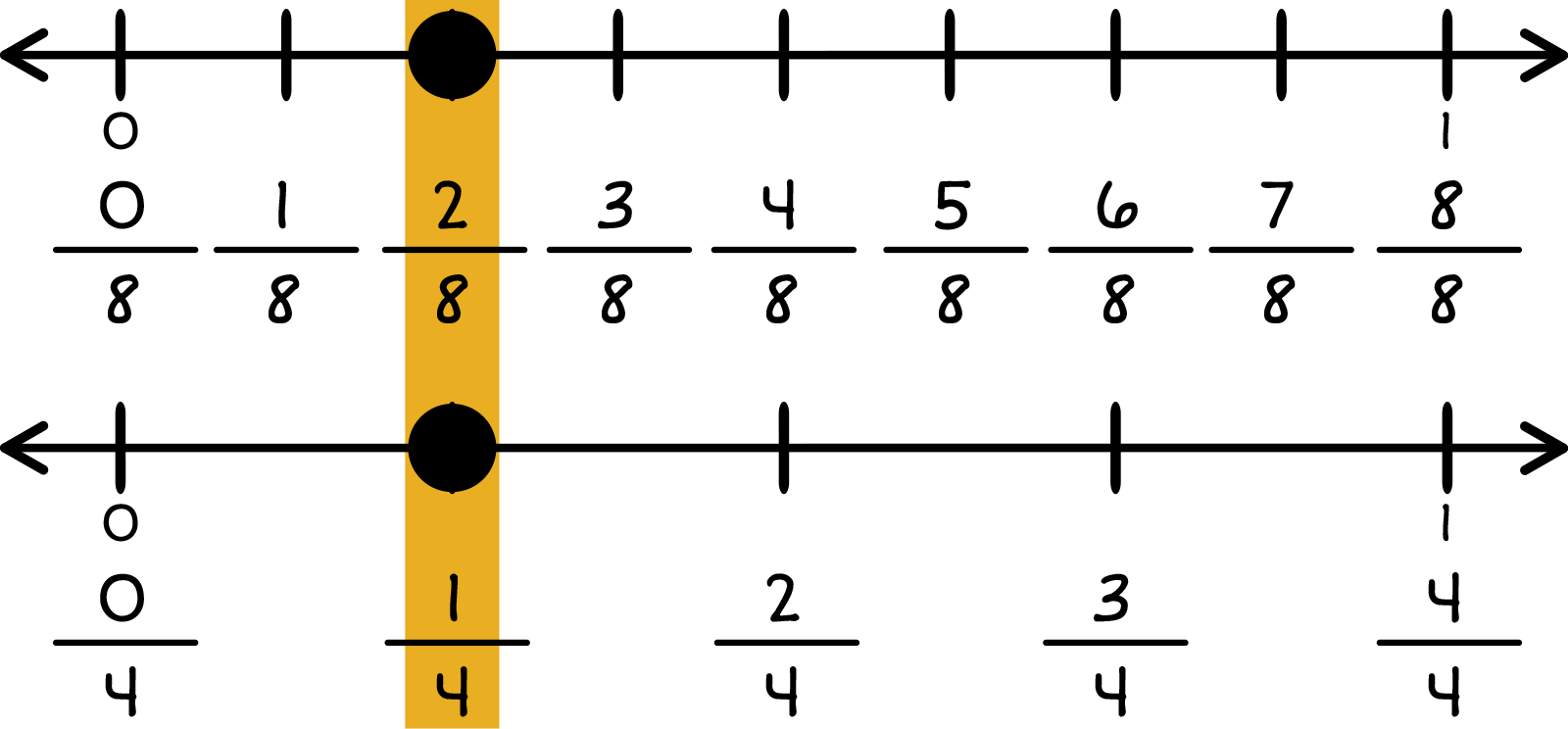Fidget Toy Fractions
Let’s watch a video about finding equivalent fractions!
Goal:
Goal:
Zoe has so many fidget toys! Let’s find out if they are made up of equivalent fractions!
This is Zoe, and this is Zoe’s fidget toy collection. These toys are Zoe’s favorite because they make a cool popping sound. Do you hear them?
Look at these fidget toys! This square is one fourth blue, and this square is two eighths blue. Do these toys have equivalent fractions?
Equivalent fractions are two or more fractions that name the same amount. So even though these fractions have different numerators and denominators, they are equivalent because they have the same amount of blue shaded.
What about these circles? This circle is two thirds purple, and this circle is four sixths purple. Let’s look at these fractions on number lines.
Notice that both number lines are the same length. In fact, the zeros and ones on each line up perfectly! Now we can easily compare the fractions.
Here is two thirds, and here is four sixths. Look at how their dots line up! Fractions that line up on number lines, just like this, are equivalent!
Okay, Zoe, now it’s your turn. Look at these two number lines. Can you tell which fractions are equivalent? That’s right! One third and two sixths are equivalent because they line up!
You sure have some fun toys, Zoe. Thanks for helping us find equivalent fractions! Now let’s hear you pop those fidget toys one more time!
Question:
What fraction is equivalent to \({ \frac{2}{8} }\)? Use the number line below to help!

Top: Number line from 0 to 1 with 9 markers. Marks are labeled from \({ \frac{0}{8} }\) to \({ \frac{8}{8} }\) with a dot above \({ \frac{2}{8} }\).
Bottom: Number line from 0 to 1 with 5 markers. Marks are labeled from \({ \frac{0}{4} }\) to \({ \frac{4}{4} }\) with a dot above \({ \frac{1}{4} }\).
\({ \frac{1}{4} }\) is equivalent to \({ \frac{2}{8} }\) because both dots line up on the number lines.

Top: Number line from 0 to 1 with 9 markers. Marks are labeled from \({ \frac{0}{8} }\) to \({ \frac{8}{8} }\) with a dot above \({ \frac{2}{8} }\).
Bottom: Number line from 0 to 1 with 5 markers. Marks are labeled from \({ \frac{0}{4} }\) to \({ \frac{4}{4} }\) with a dot above \({ \frac{1}{4} }\).
